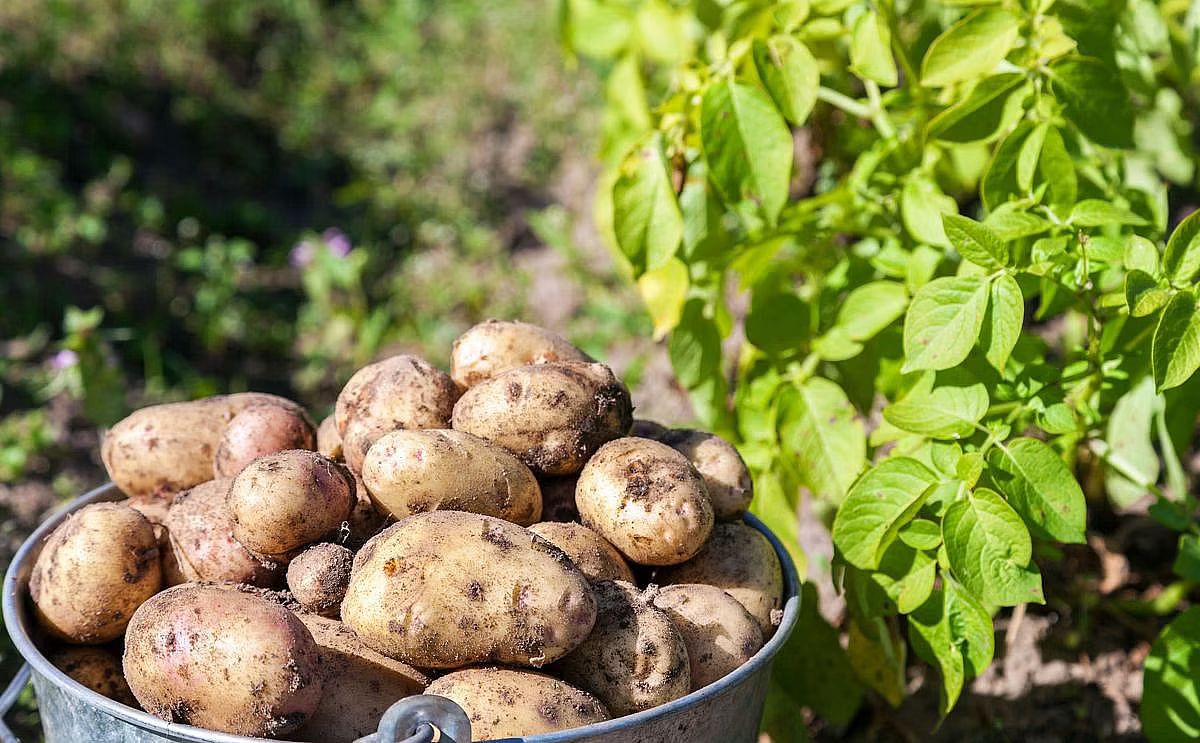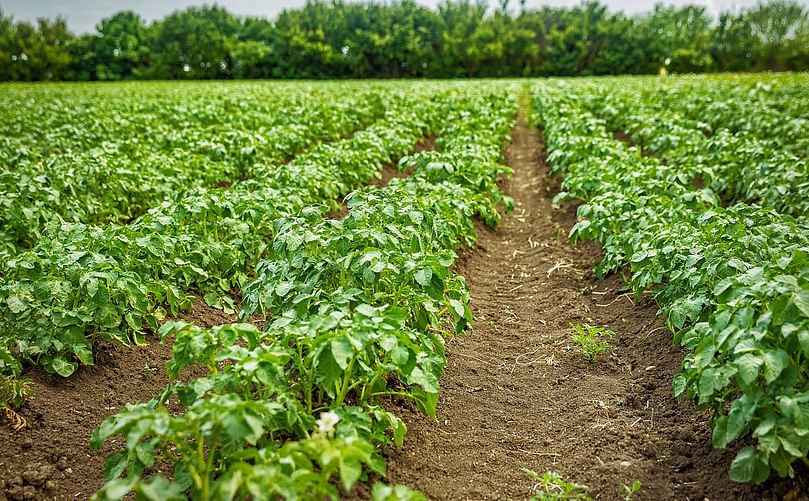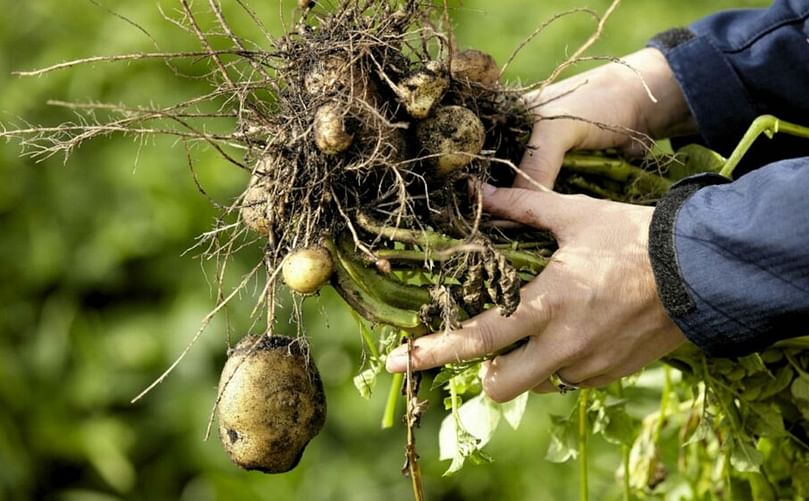The new research could offer a blueprint for better potatoes and a way to speed up the production of higher-yielding varieties.
Solapas principales
Scientists weed out harmful genes to breed better potatoes

An unprecedented look at potato genetics could help to tackle world hunger. A new predictive method has shown a way to better select parents for new potato varieties, offering a blueprint for better potatoes and a way to speed up the production of higher yield varieties.
A new study looking into the genetics of one of the world's most important crops is anything but small potatoes. While other important carbohydrate crops such as maize and rice have shown significant yield improvements since being domesticated, potato yield increases have remained stubbornly low.
Unlike these grasses, potatoes are vegetatively reproduced and grown as clones, meaning that undesirable traits pass unchanged from one crop generation to the next.
By studying the nightshade family, of which the potato is a part, an international team of scientists have been able to predict the presence of over 350,000 gene variants that are holding potato breeding back.
They hope that by better understanding the plant's genetics, researchers will be better able to breed new varieties of potato that can help feed the world and improve food security.
Dr Sandra Knapp, an expert in the nightshade family at the Museum, was a co-author of the new research.
Sandra Knapp:
"Potato breeding has always been very challenging, because their genetics are very complex, making traditional crossing very difficult."
"This research is the first baby step of a very long process, allowing plant breeders to identify candidates which could one day be the ancestors of new potato varieties that grow more vigorously or perhaps be more resistant to disease."

Potatoes are one of the most important crops in the world, but it is exceedingly difficult to cultivate new varieties.
The problem with potatoes
Potatoes are a member of one of the largest genera of flowering plants in the world, known as Solanum, which contains over 1,200 species and includes other important food crops such as tomatoes and aubergines.
While different species of wild potato grow across Central and South America, the one we eat was first domesticated in what is now southern Peru and northern Bolivia. The arrival of colonial powers later spread the plant across the world, making it a household staple and one of the four most important carbohydrate sources in the human diet.
It's success in becoming one of the most widely cultivated crops on Earth belies how difficult it is to improve through plant breeding. The breeding of other crops, such as maize, uses intercrossing of populations to introduce genetic changes which are estimated to result in a 1% rise in yield every year. For potatoes, there's been very little change.
Sandra Knapp:
"Potato breeding is very difficult because it is a clonally reproduced crop, so new potatoes are grown from pieces of old ones. It means they have accumulated lots of deleterious mutations, which impact their health and growth and cannot easily be gotten rid of using traditional breeding methods."

There are a huge range of different species of potato from across South America, but the ones we eat are descended from those first domesticated in southern Peru and northern Bolivia.
The other complicating factor is that potatoes are tetraploid, meaning they have four sets of chromosomes. In contrast, most plants and animals are diploid, which means they have two sets of chromosomes.
Potatoes are also self-incompatible, meaning they cannot pollinate themselves, which is the usual method for creating inbred lines to create new varieties. All this means that traditional breeding methods that work on other crops are difficult to reproduce in potatoes.
The 'Holy Grail' of potato breeding would be to produce a diploid plant that could be used in traditional crossing to produce what is known as an elite inbred line. By repeatedly interbreeding populations of plants, this would produce a strain of potato that has multiple copies of the same version of every gene.
These strains, known as homozygous inbred lines, would allow breeders to produce potatoes with desirable qualities much more quickly and easily.
Deciphering potato genetics
The initial step to producing better potatoes is to first understand the state of their genetics. For this, the team used a technique known as genomic evolutionary rate profiling, which looks for evolutionarily constrained areas in a plant's genome in order to map and predict deleterious, or harmful, mutations in important regions for plant survival.
To do this, the team turned to taxonomists like Sandy and her colleagues, who have a detailed knowledge of the potato's relatives.
Sandy:
"We helped the team to understand the relationships between the members of the nightshade family, grounding their research in genetic and evolutionary reality."
"While it may not sound like it, understanding the family tree of these plants is fundamental to this project, because without it all of the genetic predictions come undone."

It is hoped that by identifying the deleterious genes in potatoes farmers and breeders will be able to breed new, resilient strains of the crop.
In total, the profiling inferred the presence of 367,499 deleterious gene variants in the potato genome. This information was then used to assess sets of diploid potatoes, which could be used to create inbred lines and then start breeding new potato varieties.
The scientists were surprised to find that to breed more resilient potatoes, less vigorous, slower growing parents were the best option. These plants were more likely to be homozygous for deleterious versions of genes, which makes it easier for these traits to be bred out of the plants. This is curious, because usually the most vigorous plants are selected by plant breeders as parents for these inbred strains.
Sandy:
"It's counterintuitive to use less vigorous potatoes to create better parental lines for future potato breeding, but it's a really interesting finding. These new prediction methods could have the potential to really accelerate potato breeding ."
Using their new predictive technique, the researchers believe that they can now be around 25% more accurate at predicting which potato types will make the best candidates for breeding tomorrow's potatoes. Sandy says this shows the importance of carrying out basic botanical research, which has sometimes been overlooked in the past.
Sandy:
"This research demonstrates that the work we do at the Museum in understanding biodiversity has far-reaching implications for many things that can't be anticipated at the outset."
"Taxonomy has become increasingly important for many crops as researchers look to find out more about their wild relatives."
Studying wild relatives can help to boost the genetic diversity of crops and find useful genes that might help them overcome today's serious environmental challenges such as climate change





